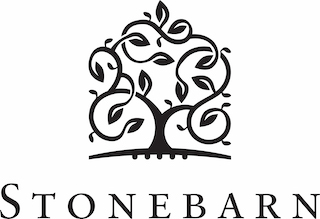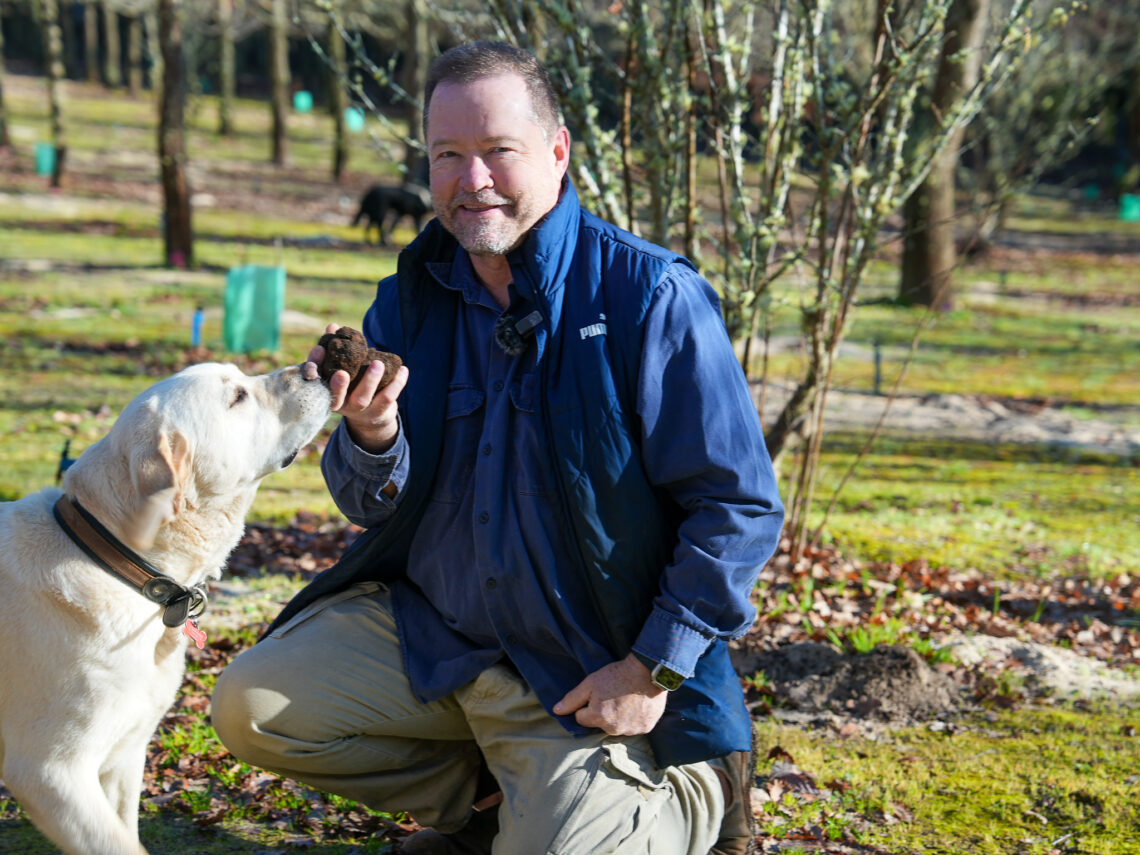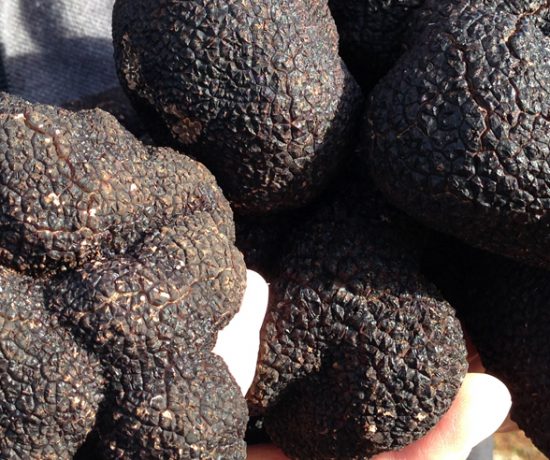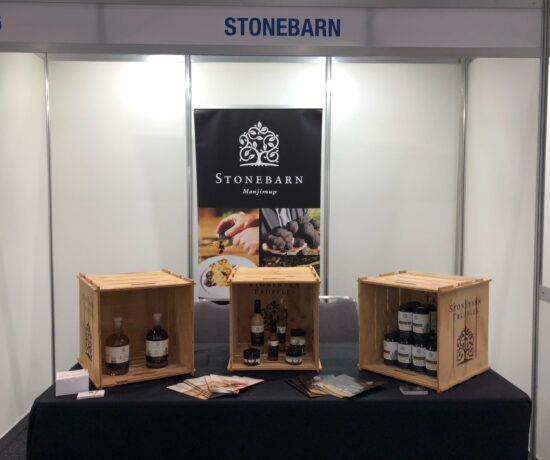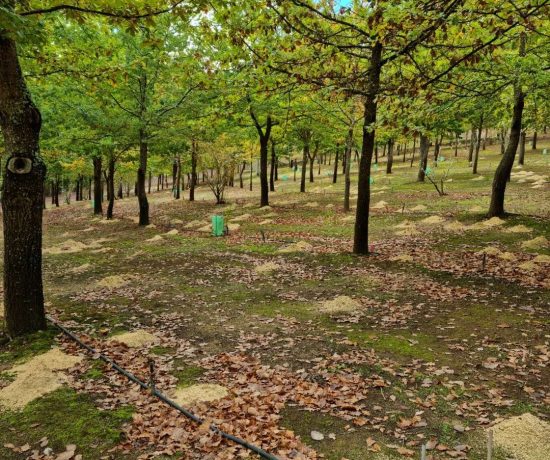Read below all about our chat with Jo Ritter, of Conversation With A Chef, on truffle cultivation. Podcast also available on Spotify: https://open.spotify.com/episode/3hTiFc3Z75jcMemdZxXmvy?si=1xCWGRX-QgiknTHcHUVX8g
I recently saw an Instagram post from Robert at GGs Gourmet Food where he was heralding truffle season. It got me thinking. I don’t know much about truffles but they do seem to cause a stir in certain circles. Some refer to them as black gold, others as a culinary treasure. I wanted to find out what makes them so special, so I had a chat to Dion Range at Stonebarn Truffles in WA. He gave me the very well told back story to truffle cultivation, which was fascinating. Then I got in touch with some of the lovely chefs I have spoken to in the past to hear how they use truffles. A big thank you to Julian Hills at Navi, Anni Smithers from Du Fermier in Trentham, Mark Ebbels at Re’Em in the Yarra Valley, Jordan Clay at Pipi’s Kiosk, Jason Staudt at Stokehouse, Gabriele Coniglio at Officine Gastronomica Italiana and Ryan Lynch at Locavore Studio. Unfortunately and embarrassingly, I had some technology challenges and my excellent conversation with Julian was lost. Julian loves truffles and knows a lot about them. He runs a month of truffle dinners in July where each course celebrates a truffle from a different region of Australia, and he talks through the importance of terroir in their aroma and flavour with the lucky diners. This is definitely a dinner to look out for and secure a booking. I really enjoyed putting this series together. Its a new concept for me and Id love to hear your thoughts. Thank you to Robert at GGs Gourmet Foods for the inspiration and help with putting this together.
Conversation with a chef: Hi, Dion. Thank you for being available. It’s really great to be able talk to you about truffles. You cultivate your truffles in Manjimup in WA. What makes Manjimup so good for truffles?
Dion Range: Secret ingredients. I think nobody quite understands, but the truth is it has been by far and away the most successful truffle growing area in Australia, and it is the newest, as in the last 25 years. You can only guess that it’s probably most similar in terms of climate, which would entail rainfall, sunshine hours, a bit of soil type potentially, where your rain falls, how cold it gets in the winter to the Perigord truffles in France. We are lucky to be so close to that.
I saw on your website that you’ve been cultivating truffles there for 20 years, 2004. Is that when you started producing or had you started prior to that.
We planted the trees a little before that. From about 2004 is when in essence you do a lot of things before you plant the host trees so that they are infected with the spores of the Perigord truffle. And then it’s a long hard wait and a lot of costs that go into it for a decade or so. You should ideally start getting your first few truffles within 5, 6 years, but it’s not similar to growing apples, let’s say, where every tree will give you apples within a certain period of time. With truffle, it’s a lot trickier, and not all the trees produce truffle over time.
The general rule is unless you mess major up all the balance that you should have,then once an individual tree starts producing truffle, it should produce truffle every year for the rest of the tree’s life. We are primarily English oaks and Holm oaks, known as French truffle oaks which are evergreen. The English oaks can live to a 100 years and more, and for what its worth in my lifetime, the holm oaks, the oldest examples in Spain, are reputed to be around 1,400 years old.All things being equal and climate change not having too great an impact, you should get a lot of truffles once the tree starts producing.
How many how many truffles per tree? Do you get multiple truffles per tree?
You’re really not growing the truffles on a tree per se. What you’re aiming at is you’re growing a mycelium. So it’s a fungal network, which is the actual organism which grows underground. And if you have a lot of trees that are inoculated, then ideally, you get this carpet effect of this fungal Interweb network, the wood wide web we call it, underground, and then the truffle is just the fruiting body that happens once a year. During the winter, it ripens. The natural way would be that the truffle, the fruiting body grows and ripens and contains the spores, which is how the actual fungus spreads to new trees. In nature, what it would be is that there a lot of brilliant trees that have been developed over millions of years. So the fungus is actually controlling the wild boars or the pigs. This is my confusion, but it’s not too hard to put the 2 points together. The perigord truffle has a hormone, a pheromone called androsterone, which is a mating pheromone in pigs. It gives off the smell that pigs find very attractive. The way that the fungus reproduces itself is it smells lovely for the pig. They’re particularly enamoured of the truffle. So they pick it up, eat it, and then drop the spores, maybe 1 in a 1000, they’ll infect another little oak tree in the oak forest, which will have the spores infect the roots or not infect. That’s a negative thing. It’s a sort of mutualistic relationship. Both parties, both the mycelium of the fungus and the tree gain, and then the cycle continues. We just do the infection or the mating as it were artificially. We infect the tree roots and then plant the trees and look after them, and you get a much better result in terms of how many truffles you can grow.
Gosh. It’s very scientific, isn’t it, when you’re having to reproduce it, I guess, at will rather than just allowing nature to do its thing.
Yes. It is. But, from a farming point of view or from an economic point of view, you want to get the best outcome possible. If we had 1000 years, it would be easy.
That’s right. And what is your job title? Are you truffiere, or is that the name of the with the area?
That’s a good question. The correct word for the truffle orchard is a truffiere. Not a trufflery, which is oftentimes misquoted. But, I call myself a simple farmer.
The whole world is more and more aware of truffles and what a treat it is and how it just improves the taste and the mystique of any food, and it doesn’t have to be complicated.You know, just scrambled eggs with a bit of truffle grated over is a fantastic experience. Prices are quoted in kilograms, but you need a truffle the size of a golf ball to feed eight people a fantastic meal, and that could cost you $30. So it’s not as outrageous as it sounds.
How did you get into truffles? What made you go that way?
It was absolutely and purely coincidental. We bought a farm in the area when our kids were toddlers because it has river frontage on two sides and a brook on the third side and it is surrounded by state forest. It’s quite steep topography, so nobody wanted to buy it and there was a blue gum plantation to make things worse. Nobody wanted to buy a farm like that because it’s not a typical orchard or flat area where you can plant a crop or whatever. We bought it because it was relatively inexpensive at the time, and we pushed out some of the blue gum stumps after the blue gum had just been harvested and had to plant something. We looked at grapes and got good advice from the local grape growers saying it would be too difficult. I had a friend who was a ex-CSIRO scientist, professor Nick Malecek, who’s the doyen of the truffle industry in Australia.
He said, why don’t you ponder putting in some truffle trees? It was a handshake and a glass of wine over a lunch and the rest was history. They supplied us with the trees, told us how to prepare the land and plant the trees, etcetera, etcetera. And that’s how it all came about. We didn’t have anything better to do. Not any great planning.
The best the best laid plans or whatever we say. Dion, what would your annual yield of truffles?
As the old nineties movies go, I can tell you, but I would have to kill you. We have 2,000 mature trees and we’ve planted another thousand or a bit more, just oak trees. We have a mix of two oak species, the Holm oak and the English oak, and hazelnuts. The hazelnuts are much more short lived, and if it takes 10 years for a tree to start producing and it dies after 20 years, it makes more sense if the oak species are producing equal amounts, to plant oak. So we’ve got another thousand oaks. But on the 2,000 trees, we get in the range of one and a half to two tons of truffle annually.
Wow. That’s a lot.
It’s a very high amount. I wouldn’t say that that’s average. Interestingly, the average in Manjamup is literally a factor of 10, more than you would get in France or in Spain with the same number of trees. If a mature successful trufflery could get 700 or 800 grams per tree in the season. In Europe, it’s more like or 70 or 80 grams for a successful truffle orchard. We approach it much more scientifically and look after the trees much more intensely than they do in Europe. But we certainly get much higher yields from the trees than the Europeans do. And thats in the Manjimup area.
And because it is in that opposite season to Europe, do you export to Europe as well?
Yes we do. About seven per cent of our truffles we grow, we export. The nice thing about truffles is they are high value versus actual transport cost. So whatever it costs you to produce them and clean them and grade them and pack them for air freighting and get them to Perth airport. From there, whether you send them to New York or Hong Kong or Tokyo or wherever, it is similar in cost. So pretty much the world is your market compared to other agricultural things where if you can’t sell in the in the nearest city, it becomes too expensive to ship.
I see. Did it did take some convincing of the European market, because they can be quite traditional. How easy was it for them to accept Australian truffles?
Yes and no, because it is out of season. So initially, I think there was a bit of a thing specifically in France where the cuisine that they use truffles in was winter heavy kind of cooking, and they didn’t think that it was something to eat in their summer, which is when our truffles ripen in the southern hemisphere. But I think that quickly changed. The whole world is more and more aware of truffles and what a treat it is and how it just improves the taste and the mystique of any food, and it doesn’t have to be complicated.You know, just scrambled eggs with a bit of truffle grated over is a fantastic experience. Prices are quoted in kilograms, but you need a truffle the size of a golf ball to feed eight people a fantastic meal, and that could cost you $30. So it’s not as outrageous as it sounds. So there’s demand everywhere else in in the northern hemisphere summer, which we obviously use to export to.
Amazing. This is a question that we can’t really know, but I wonder how people first discovered truffles because, they are an unusual thing, being a fungus and underground.
That’s right. Its interesting. I was doing a bit of research a couple of years ago for a talk. It goes back so far in history and it’s certainly not a new thing that’s just become fashionable. There are reports of Phoenician kings complaining that the truffles that they’re receiving from their traders are not of good quality. You’re talking many 1000 of years ago. Obviously, they’re different truffles. The French Perigord truffle is the most expensive and tastiest black truffle, but the history goes back a very long way. There are more than 100 or more different species of truffle that grow in a mutually beneficial relationship with all kinds of different trees. It’s just that the one that we grow is the most enticing and best tasting one. It’s nothing new. In the Middle Ages, there are records of it being banned by the church because it was seen as an aphrodisiac. I don’tknow if there’s any good signs to support that.
Well, it was for the pigs, wasn’t it? But maybe not for people.
It certainly worked for the wild boar. Who knows? I havent done any trials.
You were saying, the simpler, the better. Have you got a particular food memory, a dish that you had with truffle that really stands out for you?
I had only tasted truffle once prior to basically deciding to put in some trees and hoping I’d have an oak forest one day. It was when I was backpacking around Europe as a youth. All I remember is it tasted pretty good, and I starved for three weeks after that because I’d blown my food budget. But beyond that, no real experience. It all has come with the journey of planting the trees, looking after the trees, getting to understand what’s good, what’s not good, how best to produce the highest quantities. We have developed fertilisers and microbial soil regenerators that we sell commercially because, ultimately, it’s healthy soil that allows the mycelium to grow. And if your soil is dead without any microbial life or a biome, you’re not going to be able to successfully grow the mycelium when you won’t get the fruiting bodies, which are the truffles. So, a lot of it is just looking back because there are no good textbooks that would instruct you on how to do it. And a lot of things that were just coincidental have proven to be very beneficial. Not having chemicals, insecticides or herbicides, which tend to kill the soil microbes, or using artificial or chemical fertilisers for the trees. We keep it fairly natural, and you try and mimic what happens in the forest where they grow naturally rather than beating nature into submission, you’re much more likely to be successful. And that’s been our philosophy, and it’s proven by far the best way to do it.
What are the characteristics of a good truffle?
You want to make sure you’ve got the right truffle, and that’s sometimes confusing. Here we dont have a lot of species of truffle but in Europe, especially hunting in the wild, there are truffles that look similar to Perigord truffles, but are a different species, and they’re far less tasty. So, what characterises a good truffle is it’s got to be fully ripe. So when you slice through it, you tend to get completely black flesh with white formation, so black and white. It has to be firm and has to be really aromatic. When it’s at full ripeness, it smells totally unique. It’s a musty, amazing smell that’s difficult to describe. Those are the factors. It has to be fresh, it has to be fully ripe. It has to be aromatic. And the aroma varies from truffle to truffle, interestingly enough. I didn’t believe that in the early days because I thought how can it be different if it is grown in a different area. But people can tell our truffles from truffles that are grown 5 kilometres from our place in terms of their aroma. The aroma is important. They smell beautiful.
I saw a photo of you with a lovely looking Labrador or retriever?
Yes, we have Labradors to hunt with. They’re just beautiful dogs. And they’re easy to train because they’re particularly food motivated. They have a gene missing, basically, which gives them the feeling of satiety. So you can chuck a bag of food to a Labrador, and they’ll eat it all until they vomit. They love food. As long as they find a truffle, you give them a little snack and then they’re on to the next truffle. And they can do that for ages. An hour or 45 minutes at a time. Give them a little rest, and then they’re right back.They’re easiest to train and just lovely dogs to keep.
When should we expect to see truffles on menus and in the market?
Usually, at the beginning of June, the first harvest, or the first properly derived truffles become available. And it’s also good for listeners to understand that the truffle supply isn’t linear through the winter, June, July, August. It starts off slowly. And then in the middle of that 3-month period, midwinter, there’s usually a peak in supply because there are many more ripe truffles at that point. And then towards the end of winter, the supply tapers off. You’re more likely to be able to get truffle closer to the middle of winter or if prices vary. They’ll be cheaper in that middle of the bell graph. But in the beginning of June is when they start becoming available in the southern hemisphere.
Great. Well, thank you because you’ve given me a really great introduction to my series, and then I’m going to chat to a few chefs who use truffles and hear how they like to use them. I think theyre such a magical thing as you say and people have a lot of curiosity about truffles, so it’s been really great to hear a little bit more of the back story.
It’s a great pleasure. Truffles are intriguing, mystical things, and they’re good for the trees, and the trees benefit from having them and they benefit from the trees, so there’s no downside. They taste delicious. It has to be on the try before you die bucket list.
